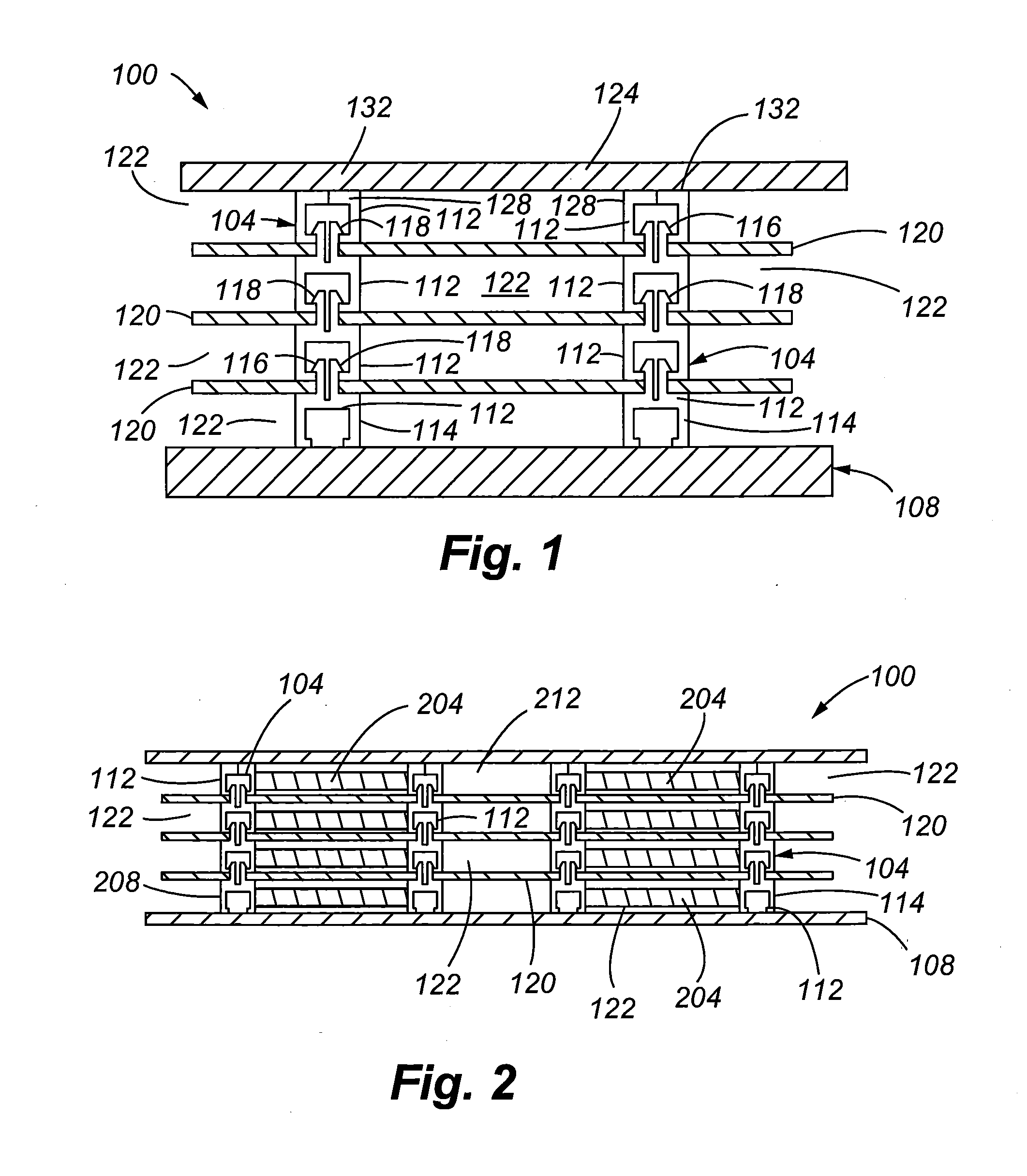Integrated Multilayer Insulation
a multi-layer insulation and integrated technology, applied in the field of thermal multi-layer insulation, can solve the problems of reducing the thermal conductivity of the insulation structure, and achieve the effects of reducing the mass of the overall insulation system, minimizing the thermal conduction for the operating conditions, and high performan
- Summary
- Abstract
- Description
- Claims
- Application Information
AI Technical Summary
Benefits of technology
Problems solved by technology
Method used
Image
Examples
Embodiment Construction
[0024]The present invention is directed to an integrated multilayer insulation (IMLI) structure. As shown in FIG. 1, the IMLI structure 100 in accordance with embodiments of the present invention can include support posts 104 that each comprise a number of post elements 112. The support posts 104 generally support and maintain a space or separation 122 between adjacent thermal radiation shields (also referred to herein as sheets) 120. A base post element 114 in each support post 104 can be bonded or otherwise interconnected to a base structure or layer 108. The base layer 108 can be the radiation shield 120 comprised of the layer of polymer or other material immediately adjacent the item being insulated, or it can be the item being insulated. The support posts 104 can comprise a number of stacked post elements 112. The post elements 112 may be interconnected to one another to form a continuous support post 104 structure using mechanical attachments, fasteners, magnets, an adhesive o...
PUM
 Login to View More
Login to View More Abstract
Description
Claims
Application Information
 Login to View More
Login to View More - R&D
- Intellectual Property
- Life Sciences
- Materials
- Tech Scout
- Unparalleled Data Quality
- Higher Quality Content
- 60% Fewer Hallucinations
Browse by: Latest US Patents, China's latest patents, Technical Efficacy Thesaurus, Application Domain, Technology Topic, Popular Technical Reports.
© 2025 PatSnap. All rights reserved.Legal|Privacy policy|Modern Slavery Act Transparency Statement|Sitemap|About US| Contact US: help@patsnap.com



